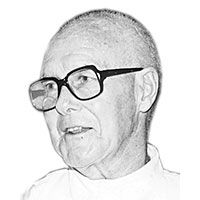On Saturday, February 2, the Jesuits in the Philippines will celebrate their Golden Jubilee as an Independent Province of the Society of Jesus.
This might cause wonder because the Jesuits in the Philippines were already established as an Independent Province in the year 1605 — 403 years ago.
It happened this way:
The first Jesuits arrived in Manila on September 17, 1581.
They belonged to the Jesuit Province of Mexico.
They grew rapidly, with missions in Luzon, the Visayas and Mindanao. The first Filipino novice was accepted into the Society of Jesus in 1591.
In 1605 the Philippines was made to an Independent Jesuit Province. It was no longer a Mission of Mexico.
By 1656, 372 Jesuits had come to the Philippines from Europe — 151 priests, 168 Scholastics, and 23 Coadjutor Brothers. And 143 Jesuits had been admitted to — and persevered in — the Society of Jesus in the Philippines. The Philippine Province had the spiritual administration of 80 parishes and missions in the Philippines.
But on February 27, 1767 Charles III issued a decree banishing the Society of Jesus from Spain and from the Spanish dominions. The Jesuits in the Philippines were transported to Spain and then deported to Italy. Everything they owned in the Philippines was declared forfeit to the crown. The Jesuit parishes and missions were transferred to other religious orders.
On June 14, 1859 the Jesuits returned to the Philippines, after an absence of 90 years. The Escuela Municipal, a public elementary school, supported by city funds, was put into their charge. The school was in Intramuros, at the corner of Anda and Arzobispo streets. In 1865 a High School and College were added, and the entire educational compound was renamed: the Ateneo Municipal. The school seal was the seal of the City of Manila. When sovereignty was changed from Spain to the United States, the name of the school was changed to Ateneo de Manila.
Jose Rizal was a boarder of the Ateneo, in Intramuros, for seven years. He was the Prefect of the Sodality of the Blessed Virgin.
Gregorio del Pilar was an Ateneo College student, but he never graduated. He dropped out of school to join the Revolution. He died on the mountain top, at Tirad Pass, at the age of 24.
In 1921, the first American Jesuits came to Manila from the combined Provinces of Maryland, New York and New England. Father Francis A. Byrne because the first American Rector of the Ateneo de Manila on July 12, 1921.
In 1937 Father John F. Hurley was the Superior of the Philippine Mission. It numbered 240 Jesuits. 82 of them, 34%, were Filipinos.
In 1947, when Father Leo A. Cullum was Superior, the numbers had increased to 337. Of these, 158 were Filipinos, 47%.
On February 3, 1958 the Philippines became an Independent Province. There were 442 Jesuits, 239 of whom were Filipinos — 54%. The first Filipino Provincial was Father Horacio de la Costa, S.J.
At the present moment, as the Philippine Jesuits celebrate their second Golden Jubilee as a Province, our roster is typical of religious orders all over the world:
There are six Jesuits 90 years old, or older.
44 are between the ages of 80 and 90.
59 between the ages of 70 and 80.
31 between 60 and 70.
31 between 50 and 60.
60 in their forties
64 in their thirties
26 in their twenties
The Jesuits in the Philippines are an aging society. Out of 326 men, 109 are over seventy. Our population graph is not like an hour glass . . . it is like a champagne glass. Many who are old; very few in their middle, competent, executive years; and then the graph blossoms out with the young men.
But there are beautiful highlights. The quality of the new applicants is excellent. They are older, but settled in their minds. They know what they want to do with their lives. . . . Six are medical doctors.
And the older priests have learned that they can still work, in spite of their calendar years. The Lay Brothers sometimes feel that they are a vanishing species, but now they are doing jobs that used to be reserved for priests. And they are happy in this work!
All the world is in a period of swift transition . . . including the Philippines. . . including the Church. For years we have been speaking about the priesthood of the laity, but now we are seeing laymen and laywomen working with all their hearts for the service of God. As the number of religious grows smaller, the ranks of dedicated lay people become stronger!
God knows how to work through His children. The Church in the Philippines is heading for something new, and beautiful, and good!
* * *
There is a daily texting service called: “One Minute With God”.
You can reach it on Globe by texting: Reuter@2978.”
You can reach it on Smart by texting: “Reuter@326”.






























